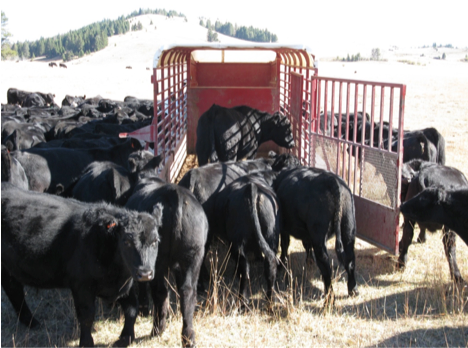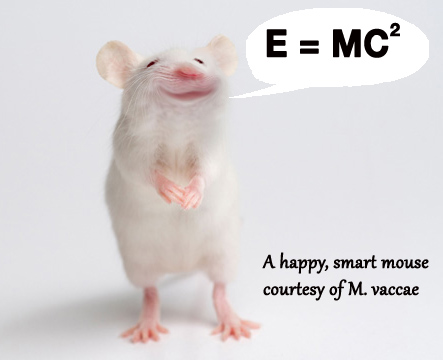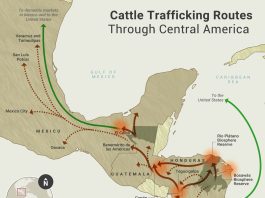On Pasture recently received the following inquiry from a reader:
With Bud Williams’ methods, is it possible to load cattle into a trailer in a pasture with no chute? If so, could you write an article on how this could be done? We had to load cattle onto a trailer recently since they escaped. We had no pens or chutes so we ended up roping and pulling cattle into the trailer. I was wondering if there is a better way to do this?
We queried Whit Hibbard, publisher and editor of Stockmanship Journal and student of Bud William’s teachings, who said he could provide an answer. Here it is.
_______

You pose two questions. The short answer to the first question—“With Bud Williams’ methods, is it possible to load cattle onto a trailer in a pasture with no chute?”—is yes. I personally asked Bud, the originator of “low-stress livestock handling,”how he would load cattle into a trailer in the open. He replied that he would work with them first.
“Working” with cattle involves teaching them that you are in control because you can control their movement; i.e., you can speed them up, slow them down, stop them, turn them, and drive them places. I’ve described these steps in previous articles that you can find here. Bud would then teach them to take a metaphorical ten pounds of pressure through an escalating series of pressure and release. Then, and only then, he would take them to the trailer, which represents only a metaphorical five pounds of pressure, so the animals walk right in. This requires a very high skill level and a deep understanding of what Bud meant by “working” with animals and teaching them to “take pressure.” To my knowledge, no one does this.
The short answer to the second question—”Is there a better way to load cattle into a trailer than roping and dragging them in?”—is yes. But if Bud Williams’ method takes too high of a skill level and is too difficult to learn, how can we non-experts do it? We do it by using what I call the “Ray Hunt approach.”
Most horsemen are familiar with and employ Ray’s famous dictum: “Make your idea the animal’s idea by making the wrong thing difficult and the right thing easy through the application and release of pressure.” This approach works really well for loading inexperienced horses into trailers, and it works equally well for loading cattle into trailers in the open. The basic idea is that every time an animal—whether horse or cow—looks away or moves away from the trailer you apply pressure to make that difficult. But every time it moves towards or looks towards the trailer you release pressure, which rewards it for doing what you want. Eventually—and sometimes this takes only minutes if done correctly—the animal understands that the easiest thing for it to do is to go up to and get in the trailer, and that that is where it will experience the greatest release of pressure. Once the animal does go into the trailer, you can calmly, slowly, and safely go up and close the gate because it was the animal’s idea to go in so it’s content. However, if you force it in (e.g., drag it in), it’s not the animal’s idea and it is only thinking about escaping back to where it came from or where it last felt safe and comfortable.
To get the best result, I advocate a combination of Bud’s method and Ray’s. When I go to load an animal(s) into a trailer, I will work with it some—within the limits of my understanding of that process—to establish some control before taking the animal to the trailer. This helps set us and the animal up for success.
Mindset
Trailer loading animals in this fashion takes a certain mindset. The conventional mindset is that cows are afraid of the trailer so they won’t want to go in, therefore we’ll have to force them, either by setting up a crowd pen or roping and dragging them in.
The low-stress mindset, according to Bud, is that cattle aren’t afraid of the trailer as is commonly believed. What they’re afraid of is what we do to them before we get there, and what we do to them to get them loaded. Consider the following photos:


I parked an open stock trailer in a pasture and within minutes it was surrounded by yearlings, and the more curious even self-loaded! This proves Bud’s point that cattle aren’t afraid of the trailer or don’t not want to go in it; it’s how we bring them in. It’s what we do to them before we even get there that matters to them, and if we give them time to investigate the trailer on their own terms and timeframe and become comfortable with it, and put them in properly (i.e., with pressure and release), we might find that we have to drive them back out because they’ll be so happy and content being in there.
In the following video, Lynn Locatelli, DVM, demonstrates bringing a small group of cattle up to a trailer, and calmly and quietly getting them to walk in by using pressure and release.
We can also walk animals in on foot if we work with them a little first, keep them calm, and simply walk them up to and in the trailer, as illustrated in the following video.
Trailer loading off a rope
Trailer loading a roped cow by walking it into a trailer was something I would have deemed impossible until I saw it. Now I realize that roping and dragging cattle into a trailer—as I’ve done more times than I care to admit—is obsolete. Instead, what we need to do is communicate what we want in a way that it becomes the animal’s idea so it wants to go in the trailer and does so willingly. This is done by following Ray’s dictum as described above and illustrated in the following video:
Practice
A really good training exercise is to practice trailer loading, both loose and off a rope, in a controlled situation, like an arena or big corral. I recommend first practicing trailer loading off a rope because we have more control of the animal. For example, every time it tries to avoid the trailer by scooting off, we can dally and stop it, then get around it and move it back towards the trailer. It’s important to get back to at least where we left off (i.e., the closest point) quickly, or else we lose ground. Also, trailer loading off a rope is easier than trailer loading loose and it’s a great confidence builder.
Next, I’d recommend starting with one critter and practice trailer loading it loose. It can be helpful and can save time if you have one rider on each side of the trailer to run interference and bounce the cow back to you when it tries to avoid going into the trailer by skirting around it. This isn’t necessary but it can save multiple laps around the trailer.
Prepare your animals
According to Bud, “It’s very important to prepare or train your animals for what’s to come, even if it’s a month off.” If we train or prepare our animals we can easily do anything that we need to do with them and they will stay calm and quiet and do it willingly. If we don’t prepare them for what we are going to be doing we’re likely to have trouble. Trailer loading is no exception. For instance, it’s a really good idea to trailer load new bulls repeatedly—using whatever you normally use for trailer loading; e.g., your trailer load out—until they will walk in calm and quiet with minimal pressure. This prepares them to be loaded in the field if necessary.
The following video illustrates how easy it can be to trailer load an animal in the open if it has been properly prepared:
Conclusion
As described and illustrated above, there is in fact better ways to load cattle into trailers than roping and dragging them in. It just takes a change in mindset, a basic understanding of the principle and technique, a willingness to practice, and patience.
Whit has shared a lot of great information to help you with your low-stress handling skills. You kind find links to all of those articles here. Whit also publishes the Stockmanship Journal covering so much more. Check it out here.






I seen ranchers with cattle who are trained to electrified fence take the polytwine and hold it between them. Cattle didn’t know there was no shock and loaded rather than touch the polytwine held between two people.
I watched two ranchers cut and load in a short time frame with cattle that were gentle but not tame.
Nice read, I think the real meaning of low stress handling. Should be looked at from the person who is doing it, not just from the cattle side. Meaning I know what that animal will do if I do the wrong thing. I know what that animal will do if I do the right thing. I try to do more right things than wrong. Thinking a head will be a great help know what you want to do. Be positive, and if not at first, keep trying with out getting upset. If up set go to the house. Been using LSLH for years, LIFE changing Thanks Bud and Eunice I call it proper stockmanship
The question in my mind isn’t “Is there a better way to load cattle than to rope them and drag them on,” it’s “is there a worse way?” Just about anything would be better.
Comments are closed.